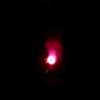The term NC lint really refers more to a purity than anything. It's meant to describe NC in it's pure, unprocessed state. This is opposed to NC already processed into smokeless powders with additives and such, which would interfere with colors. One good source tends to be nitrated microcrystalline cellulose. It burns hotter than normal NC. It's also much easier to work with. I don't know if you've ever tried to screen short fibers, but it's a pain. There are a few patents on these type of compositions. Typically you can find them by searching for low smoke stars. I included a couple.
http://www.google.co...s/US20070068610
http://www.google.co...2155630A2?cl=en
- rocketpro likes this



 Find content
Find content Male
Male




